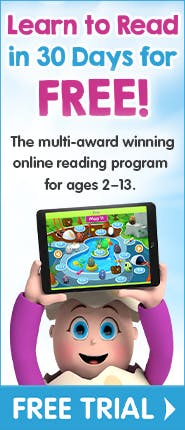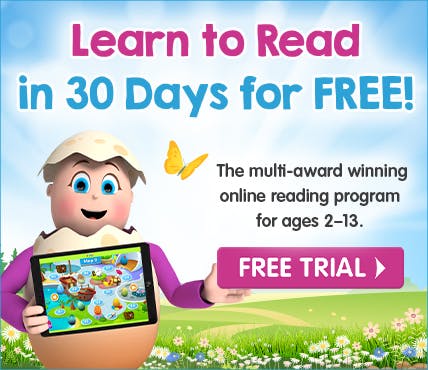


Fun Sight Word Games and Activities to Play at Home

Engaging games and hands-on activities make learning sight words fun.
Unlock the magic of reading for your child with fun sight word games and activities. No more tedious flashcard drills – these multi-sensory and hands-on activities make learning sight words a breeze. From colourful art to interactive games, turn sight word practice into an eagerly anticipated part of your day.
Sight words are the building blocks of reading success. They’re the frequently used words that form the foundation of early reading. They’re those tricky little words like ‘the’, ‘and’, ‘is’ and ‘see’ that don't always follow typical phonics rules and are often not easy to illustrate.
Instead of sounding them out, children need to recognize sight words instantly – like familiar faces in a crowd.
There are more than 200 sight words in the English language. The first 100 high-frequency sight words make up more than 50 per cent of early reading texts. The sooner your child masters these sight words, the more confidence they’ll have and the faster they’ll progress toward reading fluency.
Imagine your child confidently breezing through their first books, recognizing words instantly and focusing on the joy of the story. That’s the power of sight words.
The good news? Conquering sight words doesn’t have to be a boring and repetitive task.
With a handful of fun sight word games and activities, you can transform practice into playful learning right at home. From multi-sensory games to creative challenges, there are countless ways to boost your child's sight word recognition and set them on the path to becoming a confident, fluent reader.
In addition to ideas for fun games and activities, at the end of this article you’ll find a list of handy resources for teaching your child sight words, including activity worksheets you can download for free.
Top tips for teaching your child sight words
Your child will need to memorize and recognize hundreds of sight words over time. That’s a lot! The trick is to make the process as engaging and painless as possible. It’s important that learning to read is always an enjoyable experience for your child.
Below are our top tips for teaching your child sight words so it’s easy and fun:
go slowly and introduce a few sight words at a time (maximum four)
practise sight words daily through a variety of activities
keep the learning sessions short (around 5–15 minutes)
make it fun and multi-sensory through a variety of media (paints, markers, online games)
gradually increase the complexity of activities, moving from individual words to sentences and stories
reinforce recognition of sight words already learned by incorporating previous words into activities
read books together so your child can see sight words in context
praise effort and progress, not just correct answers.
Children typically start learning sight words around the age of 4–6, coinciding with their early reading development. In the first year, expect that they’ll probably learn 20 to 50 sight words.
However, it's important to note that every child develops at their own pace and this is a general guideline. The key is to introduce sight words when your child shows signs of reading readiness and an interest in learning to read.
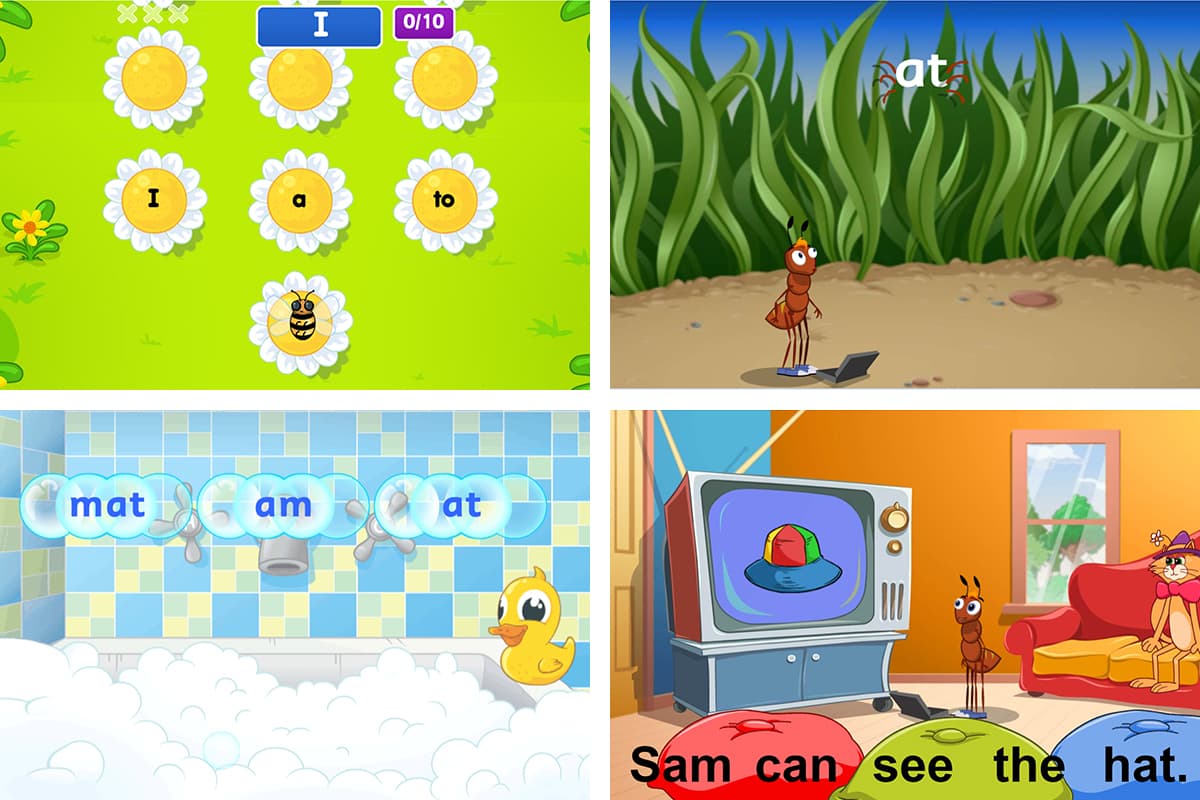
Reading Eggs incorporates teaching sight words as part of the program’s online lessons and games. New words are introduced gradually and systematically so children aren’t overwhelmed. Free trial
Learning sight words made easy and fun
Take the stress out of teaching your child sight words and let Reading Eggs do it for you. The multi-award winning learn-to-read program for ages 2–13 builds sight word recognition and reading fluency easily through fun and engaging online lessons. Plus, each lesson comes with activity worksheets you can download for free. Start your 30-day free trial today!
19 sight word games and activities
As mentioned above, introduce new sight words gradually through a variety of activities that are multi-sensory and engaging. Start with a small number of words in sets and increase the complexity of the activities to build recognition and reading fluency.
For example, begin with the words ‘I’, ‘am’, ‘at’ and ‘a’. Once your child can recognize these words instantly and can use them in a sentence, introduce another set of words, such as ‘an’, ‘can’, ‘see’ and ‘the’.
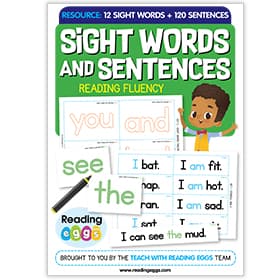
Many of the activities and games below can be played using our free Sight Words and Sentences PDF printable.
Print, laminate and cut along the dotted lines to make flashcards, tracing cards and sentence strips. Use resealable bags to keep the individual sight word cards and matching sentences of each set together. Use one set a time until all three sets of words have been mastered.
1. Tracing sight words with playdough and markers
Tracing cards help children recognize the shape of sight words by letting them fill in the letters with playdough, coloured markers or paint. The words are usually printed as outlines only and large enough so there’s lots of area to fill in. Add variety to the activity by getting your child to use different media to fill in the letters.
2. Writing sight words in shaving foam
Put shaving foam in a shallow tray and get your child to draw sight words in the foam using their fingers. You can also put the foam (or slime) in a plastic zip lock bag for a less messy activity.
3. Read aloud with your child
Read books aloud with your child, pointing out sight words as you come across them.
4. Place sight words around the house
Place sight words around the house to act as visual cues and reminders. For example, spell out the day’s focus sight word with magnetic letters on the fridge or write the word in the bathroom mirror so your child will see it when they have a shower/bath.
5. Flashcards
Combine using sight word flashcards with magnetic letters. Show your child a flashcard and get them to spell out the sight word on the fridge using magnetic letters. This works best when both the flashcards and the magnetic letters use the same case (uppercase or lowercase).
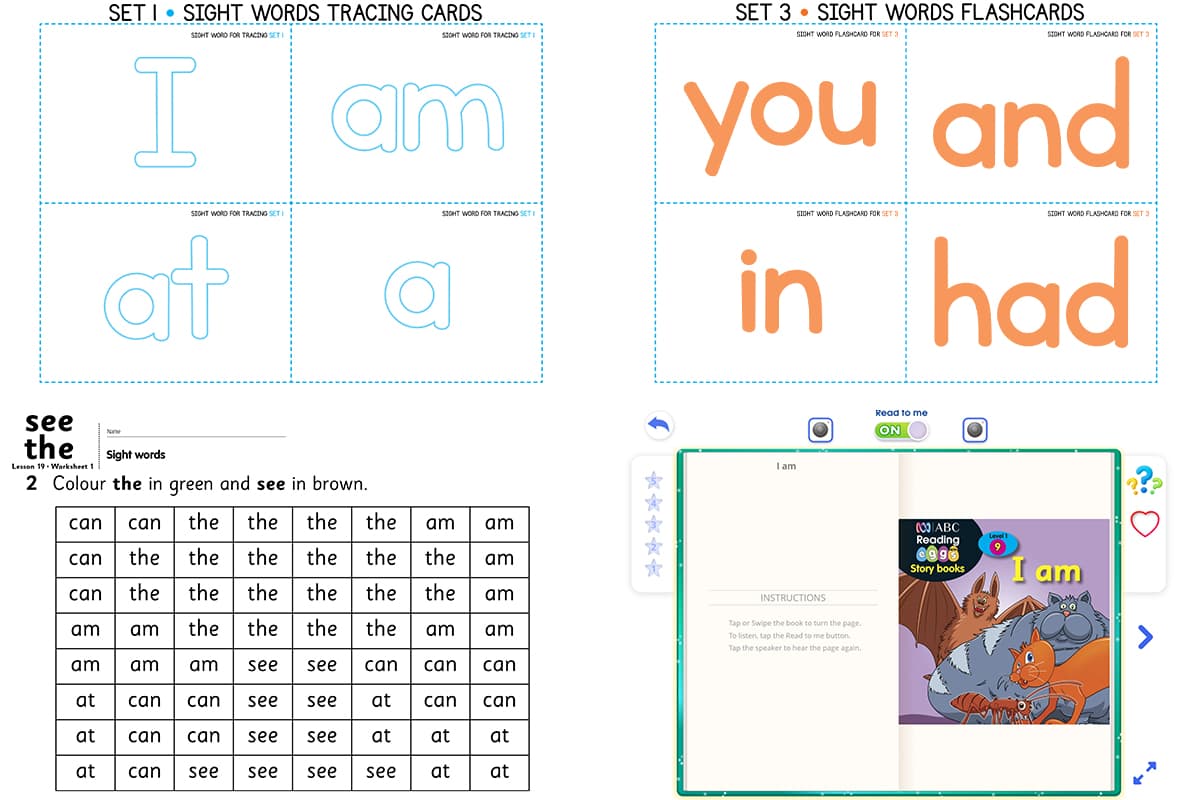
The printable activity worksheets and online books in Reading Eggs make it easy and fun to teach your child sight words. Free trial
6. Sight word wall
Make a word wall and stick each new sight word to the wall as it is introduced. Say a sight word out loud and ask your child to point to that word on the word wall (or get them to tap it with a fly swatter). Ask them to use words from the wall to write simple sentences.
7. Sight word hopscotch
Instead of numbers, write sight words in a hopscotch grid with chalk. Ask your child to hop through the grid and call out each word they land on. You can also use sight word flashcards that match the chalk words. Hold up one of the flashcards and ask your child to say it aloud. They then must avoid landing on the word for that turn.
8. Sight word snap
Print the 12 sight word flashcards from the Sight Words and Sentences PDF four times so there are 48 cards. You can make your own cards and incorporate more sight words once your child knows these first 12. Shuffle the cards and deal them equally to each player, face down. As the dealer you get to go first. Place one of your cards face up in the middle of the table. Your child will then place a card from their pile. You each take turns laying a card face up on a central pile. When two cards on the pile match, players race to place their hand on the pile first and yell ‘snap!’. The winner gets to add those cards to the bottom of their card pile. When a player has no more cards left they are out of the game.
9. Go fish flashcard game
Similar to the snap card game, print the 12 sight word flashcards four times so there are 48 cards. Shuffle and deal five cards to each player (2–4 people). Remaining cards go in a pile in the centre. Players can look at their cards but keep them hidden from others. Any matching pairs of words are placed on the table, face up. Each player takes a turn asking someone else if they have a word needed to make a pair. If the answer is yes, the card is handed over and the pair is laid down. If no, the player must 'go fish' and pick up another card from the centre pile. The player with the most pairs wins.
10. Memory/concentration game
Print doubles of the flashcards and shuffle them. Lay the cards face down and get your child to flip over two cards, looking for a matching pair. If they’re not a match, the cards are turned over again. If they do match, remove them from play. Repeat this process until all pairs are found. This game can also be played with more than one player. The person who has the most pairs wins.
11. Sight word hunting
Get your child to search for sight words in old magazines and junk mail. They can cut out the words to create a collage to hang on the sight word wall.
12. Fishing game
Print multiple copies of flashcards and attach a paper clip to each card. Then attach a string and magnet to a wooden or plastic rod (an old cat toy can come in handy here). Ask your child to ‘fish’ for a certain sight word until they have found them all. You can continue building their sight word vocabulary by introducing more sets of words as they learn them.
13. Sight word grids
Create an 8x8 grid and fill it with four or five of the sight words your child has been learning. Get them to colour the grid squares based on the sight word it contains. For example, if the square contains 'the', colour it green; if it contains 'see', then colour it brown.
14. Sight word bingo
Create a 3x2 grid and fill it with six sight words. Print matching flashcards. Select a flashcard, read the word aloud to your child and encourage them to cross off the corresponding word on their grid. You can increase the size and complexity of the grid as they learn more words.
Learning sight words made easy and fun
Take the stress out of teaching your child sight words and let Reading Eggs do it for you. The multi-award winning learn-to-read program for ages 2–13 builds sight word recognition and reading fluency easily through fun and engaging online lessons. Plus, each lesson comes with activity worksheets you can download for free. Start your 30-day free trial today!
15. Unscrambling sentences
Make up a simple sentence using familiar sight words or use one from the Sight Words and Sentences PDF (e.g. ‘I can pat a cat.’). Write each word in the sentence on a flashcard and shuffle the cards. Lay them out and let your child unscramble the sentence. Point out clues such as a capital letter at the start of the sentence and the punctuation mark at the end.
16. Give me a sentence
Lay out six flashcards on the table and ask your child to choose a card. Have them give you a sentence that uses that sight word. Repeat with the remaining cards.
17. Draw me a sentence
Ask your child to draw pictures of the sight word sentences from the activities above.
18. Listen to the sentence
Say a sentence aloud to your child and emphasize the sight word within it. Ask your child to try to locate the sight word from a small selection of flashcards. This activity will help your child to make the association between the spoken and written word.
19. Sight words in context
Ask your child to find their sight words in a book. You could read the book to them and ask them to point to words they recognize. Ask them to read those words. You could look for a specific common word such as ‘the’ while you read. Count how many times it turns up. Or pause your reading when you get to a word they know and have your child read the word for you before the story continues.
Sight word games and activities to play online
Reading Eggs Learn-to-Read Program
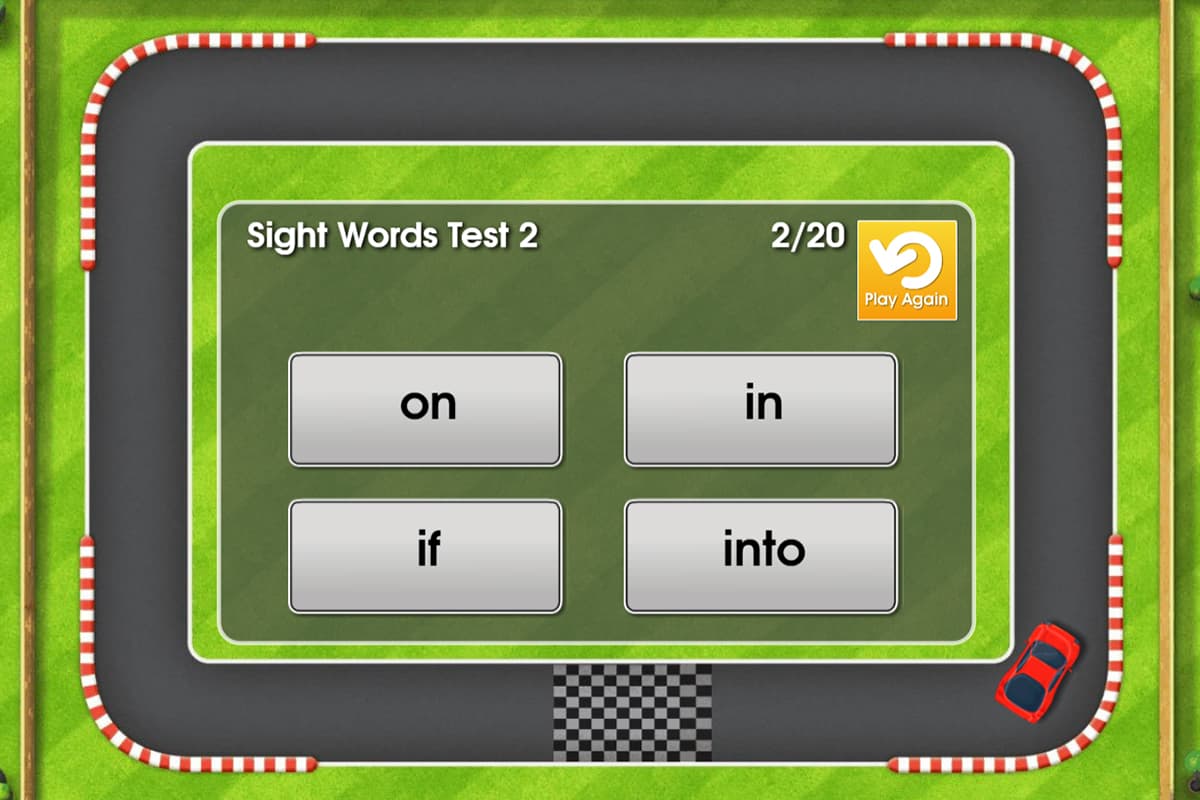
Children can check their sight word knowledge in the Driving Tests section of Reading Eggs. Free trial
Another way to provide your child with sight word activities at home is with an online program. Reading Eggs is a comprehensive learn-to-read program for ages 2–13 that teaches sight words as part of the 120 lessons and fun reading games.
Along with sight words, the program will develop their skills in the five key areas needed to become a good reader: phonemic awareness, phonics, vocabulary, fluency and comprehension.
When children start Reading Eggs they can complete a placement test to ensure they're starting at the correct reading level, regardless of their age in years. This enables the program to deliver lessons tailored to each child's reading abilities.
As well as being incredibly fun, Reading Eggs is educationally sound and based on solid scientific research.
Reading Eggs provides the perfect environment for young readers to build and practise their sight word knowledge:
Each of the 120 online lessons has corresponding downloadable worksheets, including some sight word activities.
Children can check their sight word knowledge in the Driving Tests area. There are 15 levels of quizzes, with 20 questions in each. Children need to get all 20 questions correct before they can move on to the next level. In addition to sight words, there are also tests for phonics skills (letters and sounds) and content area vocabulary.
The online library includes over 4000 fiction and nonfiction e-books to practise reading both the letter-sound correspondences and sight words they have been learning.
You’ll receive progress reports so you’ll be able to see which sight words your child knows.
“My Grade 1 son truly enjoys his time on Reading Eggs. It has helped him in particular with sight words, word families, fluency, and confidence. He loves to hatch his new characters and collect the golden eggs. The beginning evaluation accurately placed him at the correct level, allowing him to be successful and challenged.”
– Anne S.
Learning sight words made easy and fun
Take the stress out of teaching your child sight words and let Reading Eggs do it for you. The multi-award winning learn-to-read program for ages 2–13 builds sight word recognition and reading fluency easily through fun and engaging online lessons. Plus, each lesson comes with activity worksheets you can download for free. Start your 30-day free trial today!
Sight word activity worksheets, printables and flashcards
Reading Eggs provides a variety of sight word activity worksheets and printables that are free to download. Pre-printed flashcards are also available to purchase.
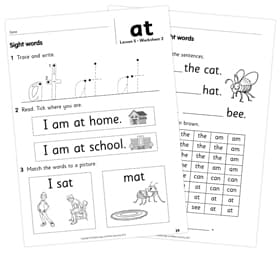
Lesson Activity Worksheets
Each of the 120 online lessons in Reading Eggs has a corresponding activity worksheet available to download for offline learning, many of which include sight word activities. You’ll find these in the Bonus Materials section of the Family Dashboard (account required).

Sight Words and Sentences PDF
Teaches 12 sight words and includes 30 short stories for reading fluency and comprehension practice. Each story has four sentences that gradually increase in complexity (120 sentences in total). The sight words are colour coded to help with sight word recognition.
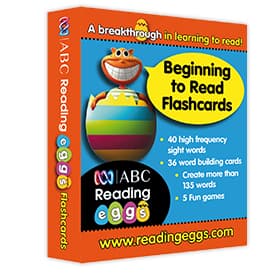
Flashcards
The Reading Eggs Beginning to Read Flashcards contain three types of cards to practise reading and phonics skills:
letter and sound cards
word ending cards
40 high frequency sight word cards.
These are available to purchase online in select regions:
Learning sight words made easy and fun
Take the stress out of teaching your child sight words and let Reading Eggs do it for you. The multi-award winning learn-to-read program for ages 2–13 builds sight word recognition and reading fluency easily through fun and engaging online lessons. Plus, each lesson comes with activity worksheets you can download for free. Start your 30-day free trial today!
